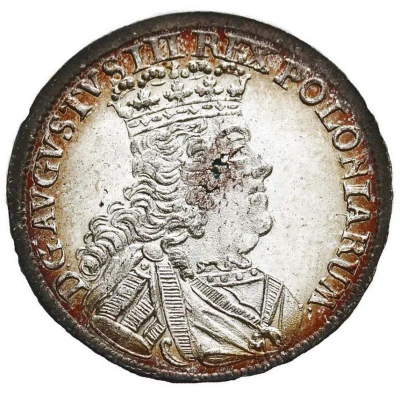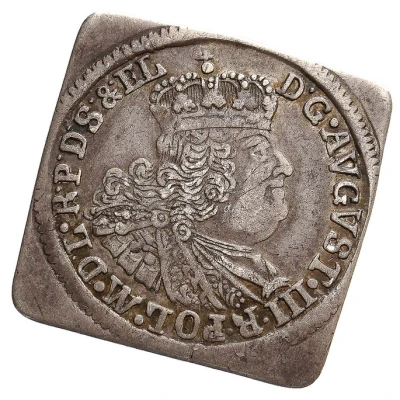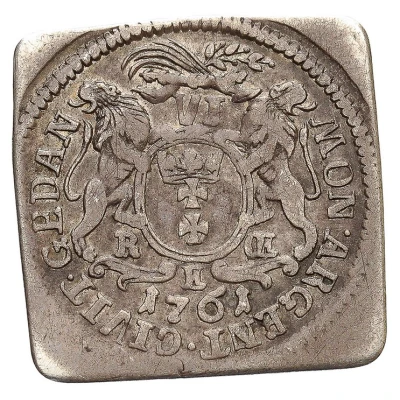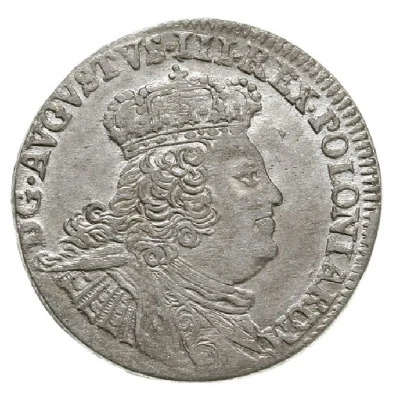
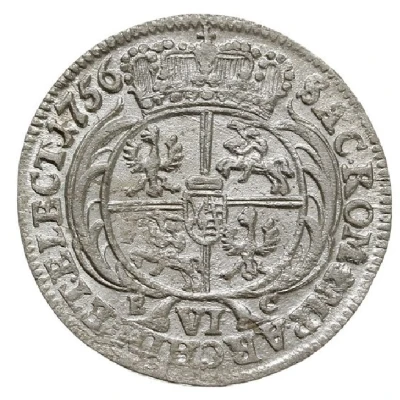

Szóstak - August III Lipsk; late bust
| Billon (.288 silver) | 3.1 g | 23 mm |
| Issuer | Polish–Lithuanian Commonwealth |
|---|---|
| King | Augustus III (1734-1763) |
| Type | Standard circulation coin |
| Years | 1755-1756 |
| Value | 6 Groschens (Szóstak) (⅕) |
| Currency | First Zloty (1573-1795) |
| Composition | Billon (.288 silver) |
| Weight | 3.1 g |
| Diameter | 23 mm |
| Shape | Round |
| Technique | Milled |
| Demonetized | Yes |
| Updated | 2024-10-07 |
| Numista | N#63604 |
|---|---|
| Rarity index | 90% |
Reverse
Crowned Polish-Lithuaninan coat of arms, small estucheon of Saxony at center. Denomination and mintmark below coat of arms.
Script: Latin
Lettering:
SAC·ROM·IMP·ARCHIM·ET·ELECT·1756
E VI C
Comment
Mint: Lipsk - Leipzig - لايبزيغ - Lipsko - Lipsia - ライプツィヒ - Лейпциг - Lipsia - 莱比锡
Many bust varieties are known (listed in Kahnt but not Kopicki):
Kopicki 2101 / Kahnt 693.e
© Gabinet Numyzmatyczny D. Marciniak
Kopicki 2101 / Kahnt 693.g
© Gabinet Numyzmatyczny D. Marciniak
Kopicki 2101 / Kahnt 693.i
© Gabinet Numyzmatyczny D. Marciniak
Kopicki 2101 / Kahnt 693.i
© Gabinet Numyzmatyczny D. Marciniak
Kopicki 2102
Interesting fact
The August III Szóstak coin from the Polish-Lithuanian Commonwealth was minted during a time of great economic and political change in the region. The coin was issued during the reign of August III, who was the King of Poland and Grand Duke of Lithuania from 1733 to 1763. During his reign, the country was facing economic challenges, including inflation and debasement of the currency. Despite these challenges, the August III Szóstak coin remained a popular and widely used coin throughout the region.




